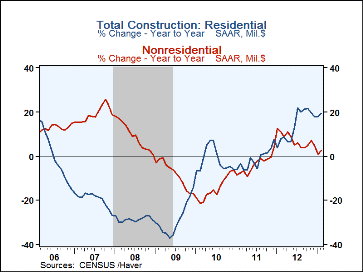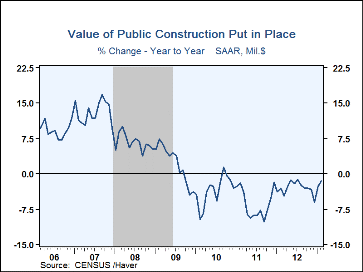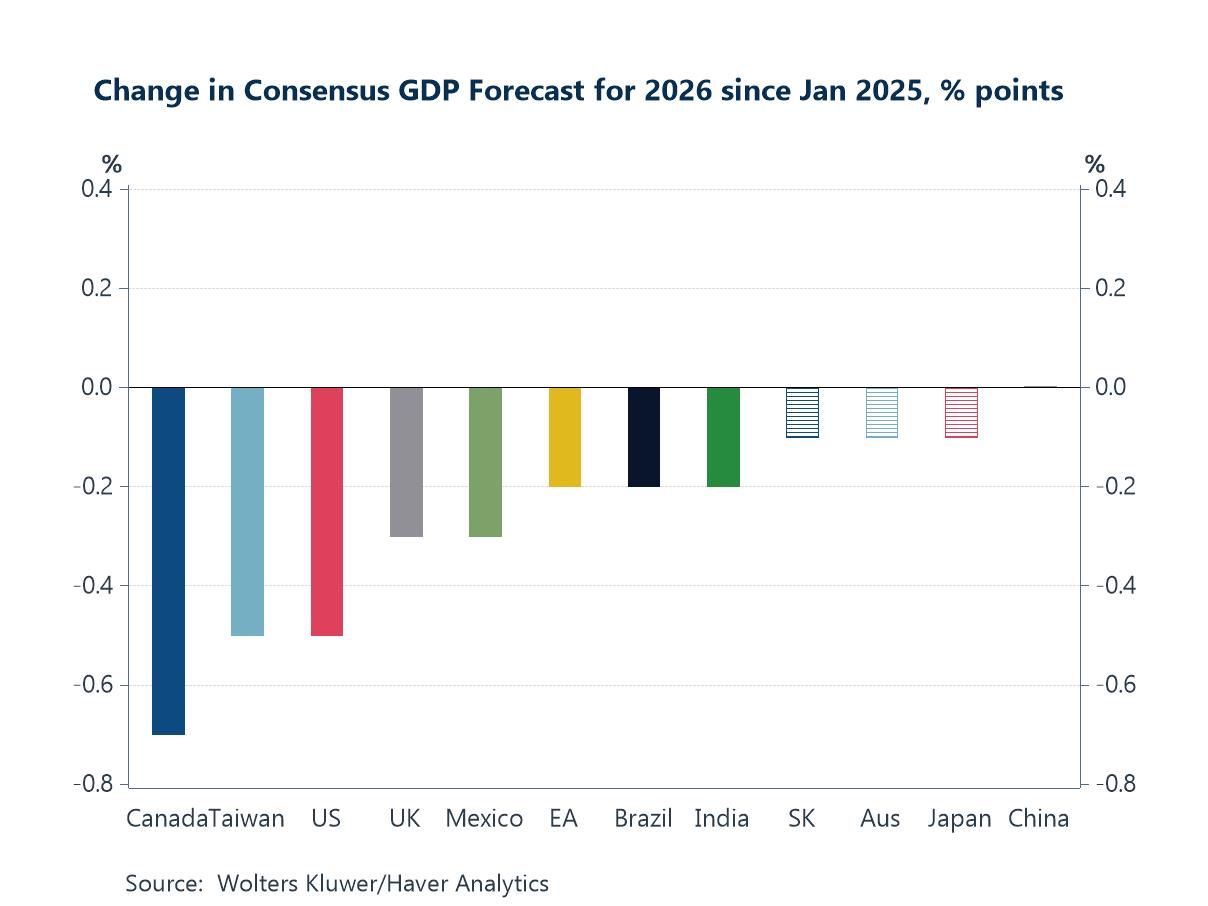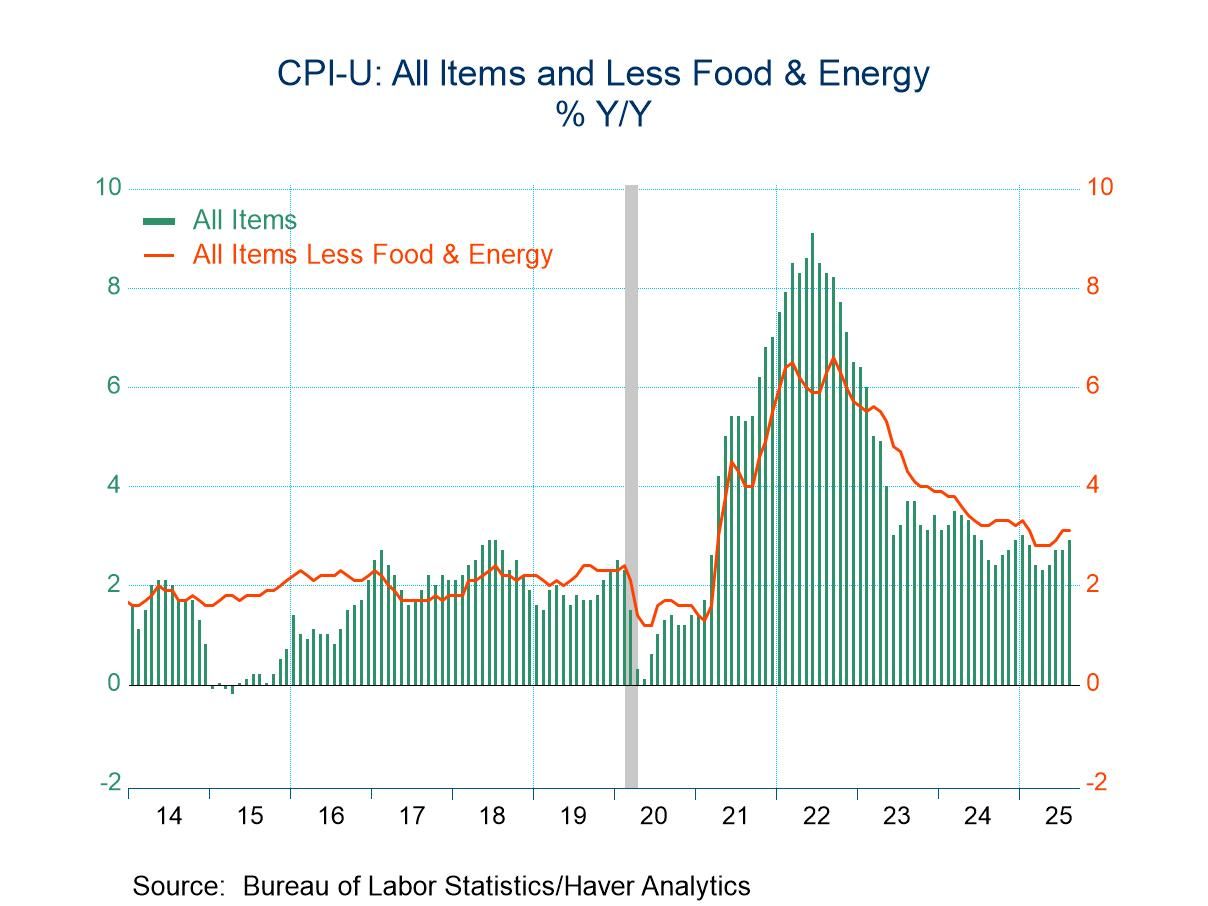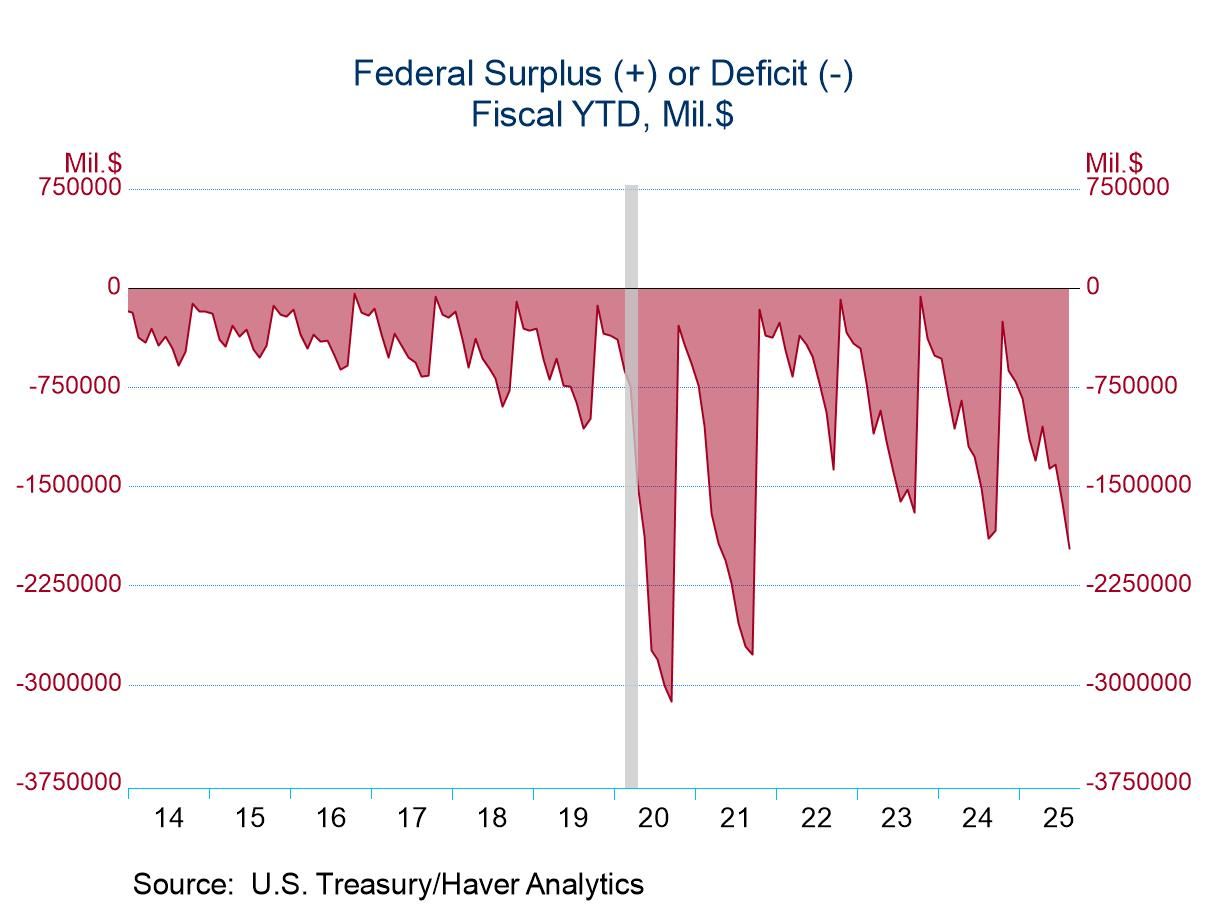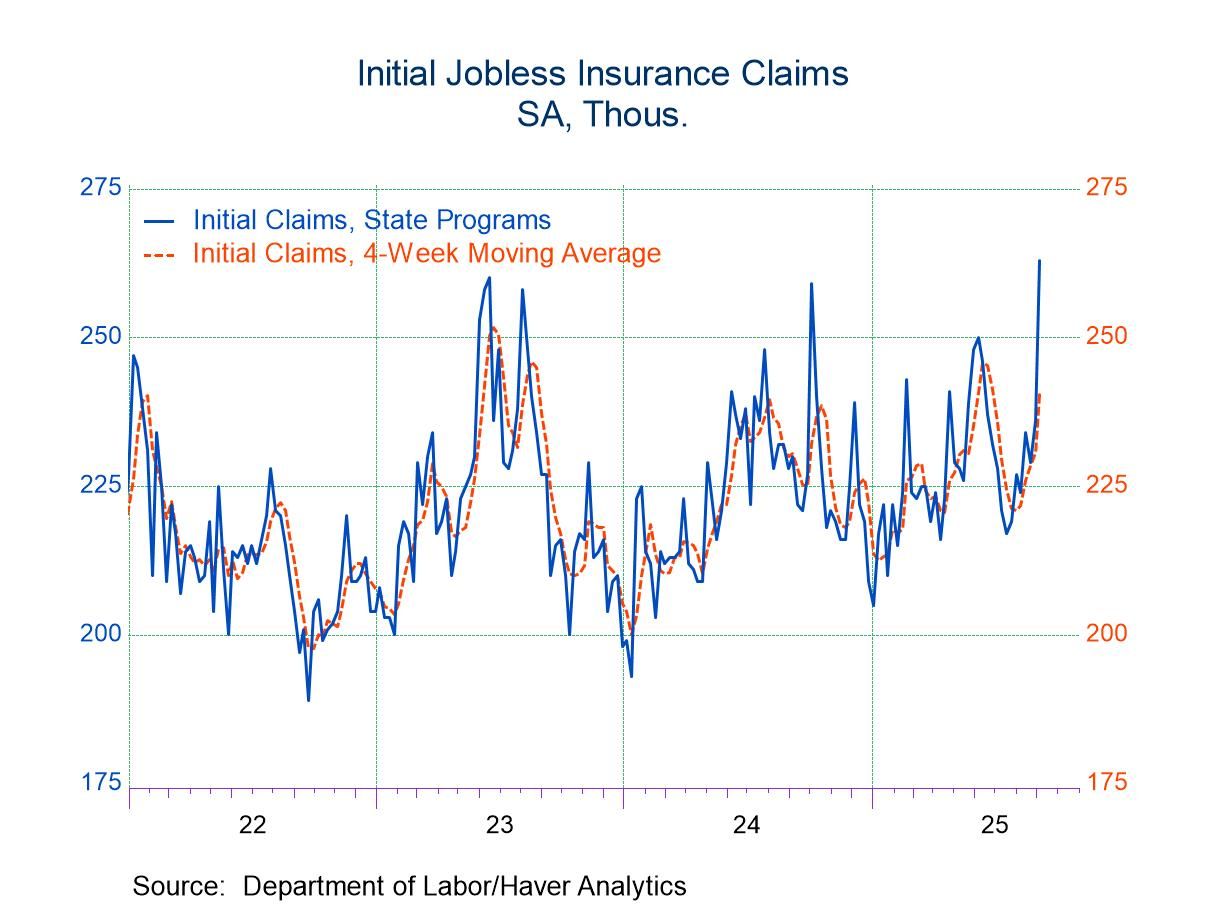 Global| Apr 01 2013
Global| Apr 01 2013U.S. Construction Spending Rebounds
by:Tom Moeller
|in:Economy in Brief
Summary
Building activity improved in February. An expected 1.2% rise (7.9% y/y) in construction put in place followed a little-revised 2.1% January decline. December figures, however, were lowered sharply. Improvement in building activity [...]
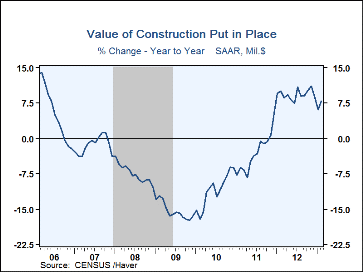 Building activity improved in February. An expected 1.2% rise (7.9%
y/y) in construction put in place followed a little-revised 2.1% January
decline. December figures, however, were lowered sharply. Improvement in
building activity was broad-based in February.
Building activity improved in February. An expected 1.2% rise (7.9%
y/y) in construction put in place followed a little-revised 2.1% January
decline. December figures, however, were lowered sharply. Improvement in
building activity was broad-based in February.
Private construction improved by 1.3% (12.6% y/y) led by 2.2% gain (20.1% y/y) in residential construction activity. That reflected a 4.3% rise (34.1% y/y) in new single-family building but multi-family construction fell 2.2% (+51.8% y/y). Spending on improvements ticked up 0.5% (1.1% y/y).
In the nonresidential sector, construction activity nudged up 0.7% (2.6% y/y). Lodging building led the rise with a 4.2% increase (16.0% y/y) followed by a 3.5% gain (5.3% y/y) in highways & streets. Construction of power facilities rose 1.0% (6.0% y/y). These gains were offset by a 9.1% drop (-7.2% y/y) in communication building and a 2.2% fall (10.0% y/y) in amusement & recreation.
Public sector building activity regained some momentum with a 0.9% rise but it still was down 1.5% y/y. Highways & streets construction rose 3.4% (5.1% y/y). Activity here accounts for nearly one-third of public sector building activity. Public power construction rose 3.6% and by nearly one quarter y/y. Transportation building gained 3.6% (23.8% y/y) but educational facility building slipped 0.3% (-8.4% y/y).
The construction spending figures are in Haver's USECON database and the expectations figure is contained in the AS1REPNA database.
Tom Moeller
AuthorMore in Author Profile »Prior to joining Haver Analytics in 2000, Mr. Moeller worked as the Economist at Chancellor Capital Management from 1985 to 1999. There, he developed comprehensive economic forecasts and interpreted economic data for equity and fixed income portfolio managers. Also at Chancellor, Mr. Moeller worked as an equity analyst and was responsible for researching and rating companies in the economically sensitive automobile and housing industries for investment in Chancellor’s equity portfolio. Prior to joining Chancellor, Mr. Moeller was an Economist at Citibank from 1979 to 1984. He also analyzed pricing behavior in the metals industry for the Council on Wage and Price Stability in Washington, D.C. In 1999, Mr. Moeller received the award for most accurate forecast from the Forecasters' Club of New York. From 1990 to 1992 he was President of the New York Association for Business Economists. Mr. Moeller earned an M.B.A. in Finance from Fordham University, where he graduated in 1987. He holds a Bachelor of Arts in Economics from George Washington University.


